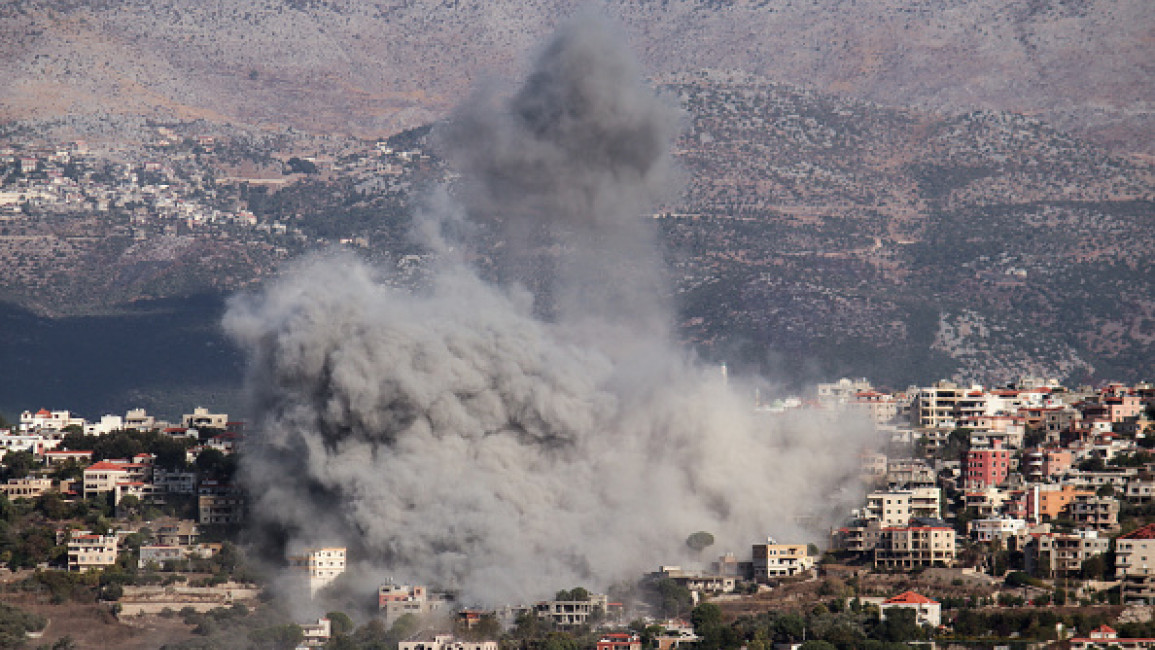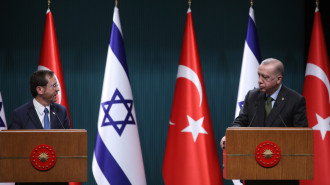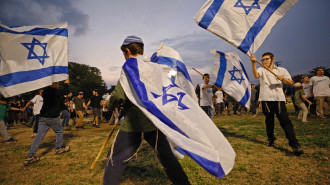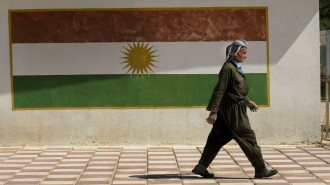
Israel is replicating its brutal Gaza playbook in Lebanon

As Israel officially began its invasion of south Lebanon this week, a sense of déjà vu immediately struck people who have been living through or observing Israel’s year-long war on Gaza.
Whether indiscriminate bombing tactics known as “fire belts”; flattening entire residential blocks; ethnically cleansing entire villages; dehumanising civilians as “human shields”; targeting medics and journalists; or even calling for building settlements, Israel is now openly copying its brutal tactics from Gaza in Lebanon, after the world allowed it to get away with flagrant war crimes and crimes against humanity.
Indiscriminate bombing through 'fire belts'
Since Israel’s exploding pagers operation that killed 42 and wounded over 3,500, the Israeli military has exploited the ensuing chaos to escalate its bombing of Lebanon. In a single day, Israeli warplanes struck 1,600 targets and killed over 500 people, including 35 children.
In the daily airstrikes on Lebanon since, one tactic in particular stands out as reminiscent of its strategy in Gaza: ‘fire belts’ or ‘rings of fire’. This concept denotes dropping dozens of bombs simultaneously on and around a targeted area, maximising devastation and destruction, and amounting to indiscriminate bombing.
The concept of fire belts was developed by the 2019-2023 Israeli army Chief of Staff Aviv Kohavi in his multi-year ‘Tnufa’ (momentum) plan, which replaced his predecessor Gadi Eisenkot’s ‘Gideon Plan’, premised on quick, decisive war. ‘Tnufa’ is focused on asymmetric wars and relies on the use of high and intense levels of firepower by air, land, and sea.
Israel first deployed this ‘fire belt’ tactic in Gaza in its 2021 war, ‘Guardians of the Wall’. The Israeli army indiscriminately bombed a residential bloc in central Gaza with some of its heaviest missiles, killing 44 civilians, and claimed to have aimed for a tunnel they presumed existed underneath without any precise intelligence about its location, size or significance.
The line of thought was that if there was a tunnel in that area, and they dropped a bomb every few meters, they would inevitably hit the tunnel.
Since 7 October, however, Israel began deploying fire belt tactics more widely and more aggressively, not aiming for tunnels, but rather to flatten entire residential neighbourhoods, decimate whole villages, maximise causalities, terrorise the population and force them to flee.
Such a modus operandi compelled even Israel’s staunchest supporter, Joe Biden, to condemn Israel’s “indiscriminate bombing” of Gaza.
Now, in southern Lebanon, Israel has similarly been using 'fire belts' consistently in the two weeks after the pager explosions, with the same aim of terrorising the population to prompt them to leave their homes and flee north of the Litani river.
Israel also deployed 'fire belts' in the assassination of Hassan Nasrallah, where instead of a targeted airstrike on Hezbollah’s leader, the Israeli army dropped over eighty 2,000-pound ‘bunker-buster’ bombs on six high-rise buildings, killing at least 300 residents.
This was perhaps to dramatise the assassination and strike fear into the hearts of spectators, who were shocked at the vast destruction.
|
|
Ethnic cleansing as collective punishment
As soon as the Israeli invasion formally started on Monday, Israel ordered all inhabitants of 26 different Lebanese villages to “evacuate immediately” northwards of the Litani River. Israel then started carrying out heavy artillery shelling and ‘fire belts’ on some of those villages on the same day to cause panic and prompt civilians to abandon their homes en masse.
This tactic was almost identical to what Israel applied in Gaza in the early phase of the war. In October 2023, it cut the Gaza Strip in two halves, declaring the northern half a military zone, and ordering over 1.4 million people to “move south”.
Then Israel began heavily bombing the north indiscriminately and targeting vital infrastructure such as bakeries, solar panel installations, and water treatment and storage facilities. Whenever the Israeli military was challenged over the high civilian death toll in the north, it would reply “but we told them, move south”.
The Israeli military officially deemed anyone left in the north as a “partner to a terrorist organisation”, including the elderly, disabled, and pregnant women who couldn’t flee. Israel repeated the north Gaza mass forcible expulsion tactic in southern Gaza in Khan Younis, Rafah, Al-Bureij, al-Maghazi, and other areas until it displaced 90% of the population and squeezed people in the south into the tiny and constantly bombed al-Mawasi tent city.
The Israeli military also designated as “extermination” or “kill” zones any area its ground troops invaded, subsequently shooting at anything that moved.
Israel’s most watched TV station, Channel 12, admitted these mass displacement tactics were not about moving civilians out of harm’s way, but rather were designed as tools of collective punishment and psychological warfare to create pressure on the population and thereby Hamas.
For instance, when Hamas fired a rocket from Khan Younis in July, the Israeli army promptly displaced the entire city and forced 250,000 civilians to flee despite having no intention of carrying out any military operations there.
The ground invasion of Lebanon now portends a repetition of these ethnic cleansing and psychological tactics deployed in Gaza, disguised as ‘humanitarian evacuation orders’.
Deliberately targeting non-combatants
In Gaza, Israel doesn’t in practice use international law’s distinction between “combatant” and “civilian”, but rather “involved” and “uninvolved”. Hamas in Gaza is the local government, a political party, a militant organisation, and also runs a number of charities. In Israel’s eyes, any Hamas non-combatant member, including civil servants, is “involved” and therefore a legitimate target.
The implication of this is given Hamas’ integration in society and that Gaza is one of the most densely populated and built-up areas on earth, with over 90% of the population now displaced into tinier, overcrowded, and heavily bombed ‘safe zones’, there is a potential ‘target’ for Israel in virtually every building, and on every street. The civilians present, despite having nowhere to flee, are, according to Israel, merely ‘human shields’.
Similarly, Israel made clear in the exploding pagers attack that it considers anyone affiliated with Hezbollah to be fair game. The pagers were not in the possession of combatants alone, but also in the pockets of political members, advisers, administrative staff, Hezbollah’s medics, and even Iran’s ambassador to communicate securely with the party.
|
|
Everyone's a 'human shield'
Israel’s most repeated justification whenever its military kills scores of Gazan civilians has always been the refrain of “human shields”. This is despite Amnesty International, Human Rights Watch, the BBC’s Jeremy Bowen, and many others never finding evidence of any actual human shielding in the wars where Israel has used that claim incessantly.
Israel is now repeating the “human shields” libel in Lebanon in exactly the same way it did in Gaza; whether concerning the 300 victims killed in the strike on Nasrallah or people who refused to be displaced from their villages. The Israeli military even released an embarrassing CGI animated clip claiming Lebanese civilians store ballistic missiles in their living rooms. The same CGI stunt was used to falsely claim that al-Shifa hospital in Gaza was standing atop a giant underground tunnel city.
Under international law, using civilians as human shields means forcing them to live alongside you. It doesn’t mean operating in an area that happens to have civilians around. According to international law scholar Asli Bâli, the “deliberate placement of civilians in proximity to military objectives during a conflict” defines human shielding, “not the presence of civilians in densely populated areas from which armed groups also operate”.
Virtually every insurgent force fights from within the civilian population to overcome the asymmetry of power. This was the case in the American Revolution, Italy's Risorgimento, Malaysia, India, Sri Lanka, Vietnam, Algeria, Angola, and even for pre-Israel Zionist militias.
Guerrilla warfare and “people’s wars” don't make civilians a legitimate target, even if combatants are nearby. The Additional Protocol to the Fourth Geneva Convention explicitly states that the presence of fighters in an area “shall not release the Parties to the conflict from their legal obligations with respect to the civilian population”.
Ironically, the only actual well-documented human shielding committed since 7 October has been carried out extensively by Israel itself, including dressing Gazan detainees in Israeli uniforms and forcing them against their will to inspect potential boobytraps and tunnels.
Muhammad Shehada is a Palestinian writer and analyst from Gaza and the EU Affairs Manager at Euro-Med Human Rights Monitor.
Follow him on Twitter: @muhammadshehad2





 Follow the Middle East's top stories in English at The New Arab on Google News
Follow the Middle East's top stories in English at The New Arab on Google News


